Introduction
Photography is the world that is absolutely different form painting, sculpture and architecture. It may seem that photography combines the features of all above mentioned trends in art and integrates them all while creating the pictures of different object. There are many of artists who shifted from different types of art to photography. Photography combines the vision of the aesthetics of the painter, the possibility to build a picture of the architect and the opportunity to cut off unnecessary angles and elements of the sculptor. One of the representatives of such a trend in art, namely photography, was Alexander Rodchenko. He could not devote his life neither to painting nor to other types of art except photography due to some features in those arts that dissatisfied him. Having decided to become a photographer, Alexander Rodchenko tried to create some new rules for photography that could serve people and, still, remain the art. One of the main focuses of the paper is Alexander Rodchenko and his photos that are the parts of the constructivist idea in the photography movement that started in 1920s; being one of the founders of the constructivism, Rodchenko was one of the greatest photographers of his time who used odd angles and unexpected shade decisions while creating the masterpieces, his photos with the purpose to ruin the traditional understanding of art and make people perceive it wider and more innovative.
Precursor of the constructivism and its views
Naturalism and pictorialism were two trends in photography that preceded constructivism. Naturalism with its natural direction influenced the pictorialism that developed from 1888 to 1912 and at this time the naturalistic trend disappeared. The main idea of the naturalism was the depiction of the items that are not supported with any technologies. The appearance of the pictorialism was a kind of a break in the understanding of the photography. The pictorialism focused on the platinum, gum bichromate, or photogravure colors in the collaboration with black and white. One of the main emphases of this trend was the documentary photography. Still, the landscapes were also popular. The pictorialism opened the doors to the constructivism and its understanding of photography.
The great thinkers in the constructivist movement were fighting against decorative and traditional art with the motive for creating new utilitarian and practical forms. Their consent was posed to the analysis of the work objectively; the movement was devoted to innovative ideas on the outer aesthetics of a form focusing on the functional and structural aspects. Constructivists made an emphasis on the use of materials, illustrating how to manipulate them for creating the desired forms. Rodchenko was married to Varvara Stephanova and they together published a proposal or Manifesto on Productivism named ‘Program of the First Working Group of Constructivists’.
There is one notable declaration in the manifesto which talked about art to be down, wishing technology a long existence. They together embraced technology and struggled against the social usefulness of art and consequently asserted that art should serve a principle. They proposed that the art of the future should be the constructionist one. The main idea of the manifesto can be declared in the following lines, “Down with art if it is an escape route from a meaningless life! Not for art that reproduces the external world, prettifying it with a decorative mantle, but for a constructive art that reflects our way of life”.
Furthermore, the manifesto was aimed at representing the reader with the information that was crucial for the constructivists and they wanted to deliver it to the audience. The authors focused their attention mostly on the ideological aspects rather than on the techniques which may help to reach the core idea of constructivism. The manifesto called to experiments in the art with the main purpose – to find you.
Introduction to Alexander Rodchenko as a photographer
The Russian constructionist, Alexander Rodchenko was a painter, artist, sculptor, photographer, designer, graphic designer. He was one of the founders of Russian constructivism. He was born in St. Petersburg on the 5th of December 1891. Rodchenko was known for his greatly endorsed power of versatility and as such he was recognized as one of the most versatile constructionist and productivist artists after the Russian Revolution. He was primarily engaged in painting and graphic designing before shifting to photography and photomontage. Rodchenko’s photography was opposite to artistic or visual paintings; it welcomed social society and was officially inventive and original. His great desire for analytical documentary photo series pushed and enticed him into the creation of the pictures free from common angles and homeliness. The odd angles and the position of shade on the photos by Alexander Rodchenko made him popular all over the world.
Alexander Rodchenko was the first who dared to exalt photography to the level of art. Being rather limited in aid, without technological innovations and scientific knowledge that are available for now, the photographer managed to invent something new and became famous even more than those who have such opportunities nowadays. The camera and imagination were everything Alexander Rodchenko had. Nevertheless, his innovative vision of art, his bright and at the same time strange perception of the reality made it possible for us to enjoy the work that was done many years ago.
Alexander Rodchenko worked as a designer, creating the clothes, furniture, different graphic items, such as book covers, film captions, and posters for various media companies. Alexander Rodchenko’s subsequent works consisted of experiments with photography and capturing diverse radical angles, excluding ordinal and typical compositions. The Russian constructivist graduated from Kazan Art School in 1911. After receiving training in painting, he followed his vocation in it. Rodchenko was highly influenced by creative thinkers; that is why he is also recognized today as one of the founders of constructivism. He declined from painting because of the subjectivity; he was also against the painterly aesthetic. The aesthetics for Rodchenko is something different that could not be created with the express purpose and with the paper and pencil. Margolin once said that Rodchenko “brought an element of realism of facticity to the photomontage”. The same concerned the photography. It seemed that the photos by Alexander Rodchenko turned to life again and again while looking at them.
Rodchenko’s consideration of art
Rodchenko took photography as a career in 1921. His earlier works were devoted more to painting and they were different from photography. Photography was a more technical and mechanical process of creating images. It involved many processes; the photos were developed, exposed and consequently subjected to some chemical processes. Rodchenko mastered the act of photography with his usual form of capturing the subjects. He is quoted as saying “One has to take several different shots of a subject, from different points of view and in different situations, as if one examined it in the round rather than looked through the same key-hole again and again”. Alexander Rodchenko had the belief that primitive or traditional forms of photography kept the viewer far from conceiving the idea of their subjects. To be specific, it may be stressed that “Rodchenko was arguing for an extension of the way in which photography defined reality”. Rodchenko also believed in modernism, design, and architecture. His earlier photos were based on the constructivist movement until in the 1930s when he started designing for the Red army that carried a socialist message or realistic one.
There were a number of reasons why Rodchenko decided to shift from painting to photography. One of the main reasons for shifting to photography was the artist’s consideration of the “death of painting”. The triptych represented in 1921 was one of the signs of the artist’s decision (Fig. 6). This work of art, “Pure Red Color, Pure Yellow Color and Pure Blue Color” centered on the specific event in the history of Soviet art. The painting is rather symbolical for Alexander Rodchenko as relating to the triptych he once said, “I reduced painting to its logical conclusion and exhibited three canvases: red, blue and yellow. I affirmed: it is all over”. There is an impression that the triptych as if said goodbye to the painting in general. The new epoch opened its doors on the way to the art, the photography and montage in the trend of constructivism, with it peculiarities and specifics, where Alexander Rodchenko played a significant role.
Rodchenko’s invention: the Leica
Stairs is one of the photos created by Rodchenko that shows his field of interest (Fig. 1). The linear grid created by the shadow as shown in this picture is one of the peculiar features of his photography. It is possible to emphasis that constructivist linear structure was the element he liked and wanted to express something via it. Different buildings, overhead wires, or the stares and the shadows they cast are considered to be the part of this constructivist linear structure. The picture Stairs is not uncomplicated or clear cut; the composition is manipulated by the camera and the camera even controlled the subject. The photographer proficiently used the contrast between black and white supporting it by the words that “in order to educate man to a new longing, everyday familiar objects must be shown to him with totally unexpected perspectives and in unexpected situations; new objects should be depicted from different sides in order to provide a complete impression of the object”.
In 1925 the original Leica was introduced to the world at the Leipzig Fair of 1925. Rodchenko had a great desire for modernization and technology and so he consequently adapted the use of the Leica. The Leica as was the best camera to exist at that time. It brought change to the course of photography as no other camera has done formally the same as it could. Russia could see the Leica on the may, 1927, on the presentation of the Soviet Photo. The Leica was popular and helped creating a number of fascinating pictures (Fig. 2).
The Leica camera took a step in the great scene of popularity and its success was aligned to the fact that the Russian painter-turned-photographer Alexander Rodchenko adopted the use of the camera. He wanted to make known the new revolution camera and it effectiveness. He wanted people clearly note the format of the new camera. His formal photographs were not identified with the type of the camera used but in the case of the Leica he wanted to prove a point. There is a picture that identifies Rodchenko and his innovation, Leica camera (Fig. 3).
When considering the name of Rodchenko in the soviet times, we tend to see that he was described as the best known soviet photographer who used the Leica. The Leica had a great impact on his career as a photographer and an artist. Undoubtedly, he was the best known photographer when it came to using the Leica with his photomontages, documentary photographs, portraits and so many other works. In 1920s he took a series of photographs of street vendors including one remarkable street photograph of vendors on one of the street of Moscow. Many writers tend to acknowledge this picture reflecting that Rodchenko’s lens takes over the city, vivacious and sparkling street trade, commotion and movement. When taking Rodchenko’s photographs, his interest was drawn more to the expressions and gestures of the subjects. He would want his subjects to acquire some kind of posture not usual to photographic one. This act distinguished him from many photographers an unarguably made him the best of his kind.
Rodchenko’s works always exhibited some kind of unusual photography aspects. His subjects were always captured from odd angles and heights. His kind of technique was not inline with the developing concepts of social realism and consequently he was being criticized for declining from the ideological contents of his photographs. However he was the best, first an innovator in the soviet photography he did a lot for the popularization of the 35 mm photography. Rodchenko is one of the soviet photographers who managed to appear in the American print collections. The works of this great photographer were exposed in the Museum of Modern Art and also in the Library of Congress. It is easy to understand that from the kind of the photographs Rodchenko took that his works were meant for publications, advertisements, magazines, posters, and books covers.
Rodchenko’s works
Warren once said that Rodchenko’s “straight photography sought to seize an objective reality made of everyday objects”. Considering his works, it is impossible to disagree with the fact. Nature creates the photos and the photographer just pictures them, engraving on people’s memory. The significance of Alexander Rodchenko’s works is incredible as they impress by the creativity and innovation. The style the photographer uses is strange and is absolutely different from what people got used to consider.
However, for a complete and better understanding of the style, destination and subjects of Rodchenko’s photography, the comprehensive example the Russian constructivism is going to be presented with respect to Rodchenko works. The first thing that should be done is the consideration of the message the great constructivist, Alexander Rodchenko, wanted to deliver to the audience. The Russian artist’s work basically focused on the earlier works of Rodchenko with respect to the non-decorative ones. Some of the discernible characteristics of Rodchenko’s works may be taken as the basis for the analysis. Many of Rodchenko’s techniques and the manner of photographing are taken and used, namely the usage of the neon lights as the pointer in decorating the poster on the door front. The combination of dark and white colors was one of the noticeable characteristics of Rodchenko’s photography.
At this point, it is imperative to discuss some of the photos made by Alexander Rodchenko. His works are remarkable. They were and are so well-known that even if one is not familiar with him, he/she must have seen his works at least ones. He wrote many books, one was on the soviet avant-garde photomontage. Many photographers at his time were influenced by his works. Rodchenko’s works of the first decade are included in many photomontages across the world. Heyward also recognized the Great Russian by featuring his photos in her photomontage. Across the world, many people tend to use his works for book covers, posters, and for illustrations in books. In this respect, one Scottish artist copied his work for the cover of his debut album. The familiarity component of the works of Alexander Rodchenko was in the fact that his works were widely known for their intense level of foreshortenings. The way the photographer captured his subjects is fascinating, oddly or crosswise, above or below his subjects, and also the capturing his subjects from odd angles (Fig. 4). Nowadays people do refer such kind of capturing from odd angles as the Rodchenko angles.
There was a series of works by the great photographer devoted to Lili Brik (Fig 7). She was his model when he worked for the board of state publishers at Leningrad branch. Lili Brik was Rodchenko’s lover before he got married to Vavara Stepanova, his friend. This incident raised a great deal of alarm and accordingly, an author, Vladimir Mayakoysky wrote a book giving a poetic account of the separation of Rodchenko from Lili Brik. The picture of Lili Brik shows the main idea of the author’s consideration of art, the black-and-white photo on the pink background that became possible after the montage.
Talking about Rodchenko’s photomontages it is impossible to avoid the author’s uniqueness. Even though his designs now look outdated, they still hold a basic ground when talking about photomontage. The well known Leftist Artist Magazine (LEF), now called the Novi LEF, used the covers of the famous works by Rodchenko edited by the Osip Brik, his colleague. It is possible to see 29 greatest works of the photographer that are the examples of his drizzling montages (Fig. 5).
Describing the style Rodchenko used in photography, one picture is notable to underline when it comes to works photographed behind and photograph portraying oblique angle components. The Girl photo shows a woman photographed from behind at an oblique angle.
There is one more photo that deserves our attention and is notable among the works by the photographer (Fig. 4). He uses space in this photograph, thus showing his good knowledge of overflowing his photographs when he photographs the sky as “an important element and Rodchenko seems to be flooding his photographs with cosmic energy”. Rodchenko’s works are fascinating and full of energy. Most of them are the representations of his earlier and existing life. The strength and urgency of his photographs still leaves today and many of his works are collected in various museums all over the world.
Returning to the first works of the artists, it is significant to mention that Alexander Rodchenko started its career as a photographer from portraits. Figure 8 depicts several works that are related to the early period of photographer’s career. Those portraits are shot from the people of Rodchenko’s circle, “avant garde poets, writers, critics and other literary types”. Still, even looking at those first works it is possible to catch the innovative and impressive vision of the photographer, his different consideration of the photo in general. Even creating the portraits, where it seems rather difficult to be innovative, Rodchenko tried to present his individuality there, stressing his personal techniques for making photos.
It is possible to state that Alexander Rodchenko was a fighter “for a new culture” and “conveyed the strength of this effort in his powerful portrait, which reveals a quality of independence”. Considering the photos made from odd angles and following the lines of shade that are impressive and fascinating, the main idea of the photo is more understood. In particular, one may think that strange angles and deep shade on the photo may just ruin the focus of the picture and shift to the background the central focus of the photo. Still, the technique, called Rodchenko angle, only highlights the objects that are photographed.
Rodchenko’s works were aimed at different ideas and visions, there were great many different focuses the photographer stopped his attention. Still, one of the main themes of his works, and he personally told it, was political and social message, he wanted to deliver to the audience. Nevertheless, the political and social message was “not just in providing as escape from the grim routine of daily life” but also in struggling against and ruining the traditional understanding of the world. The main purpose of the constructivists, and Alexander Rodchenko as one of those, was the understanding of the world through the other shape, through the absolutely new form.
In conclusion, there is a wide bridge between the paintings by Alexander Rodchenko and his works of design and photography. Having refused from painting in the time when he considered it dying, he shifted to constructivism having become one of its founders. Alexander Rodchenko with his wife Varvara Stephanova wrote the manifesto, named ‘Program of the First Working Group of Constructivists’. Furthermore, the photographer’s contribution to the field is amazing. His photographs are mostly a result of the expressive works he created. This is because of his experimentation in working with angles and attempting to define his subject or picturing his subjects from a personal perspective of unpredictable situation or position. Presenting black-and-white works, the author wanted to emphasize the very picture and to do it by means of angle, not via the color. The lay of shadows on the photographer’s photos is fascinating. He was one of the first who managed to achieve the expressivity via unexpected shade and odd angle. Being the part of the constructivist movement, Rodchenko wanted to ruin the traditional perception and understanding of the art and create the new, absolutely different vision of the whole world, without boring traditional exposition.

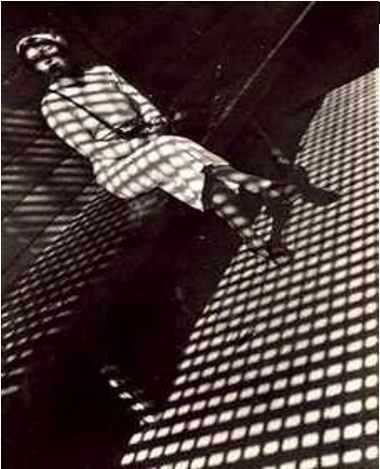
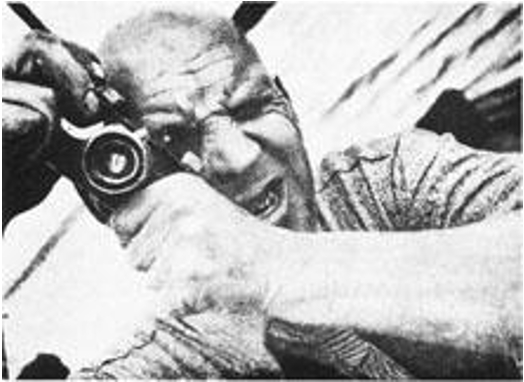
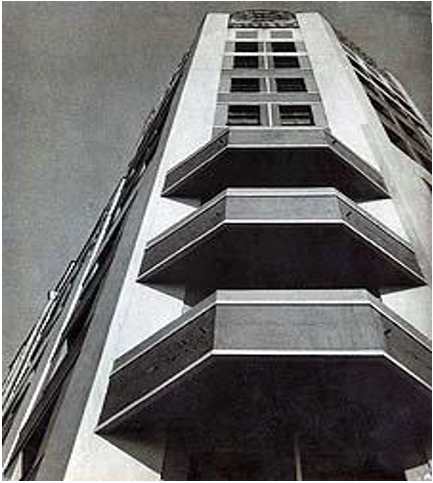
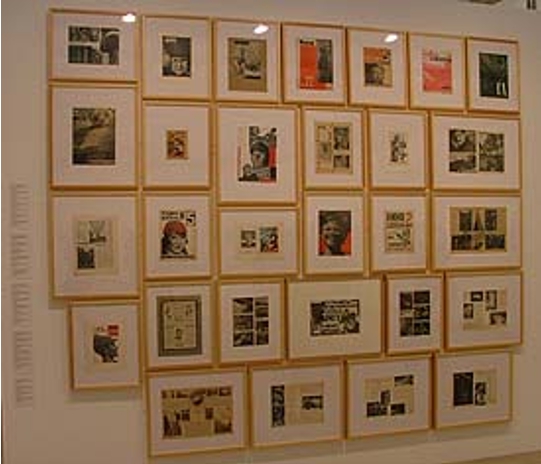
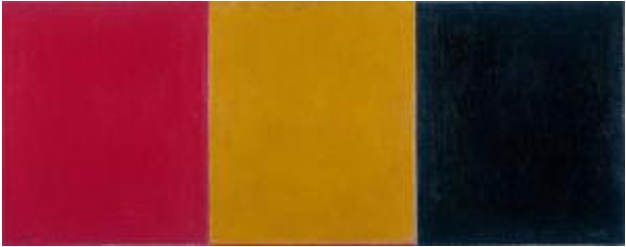
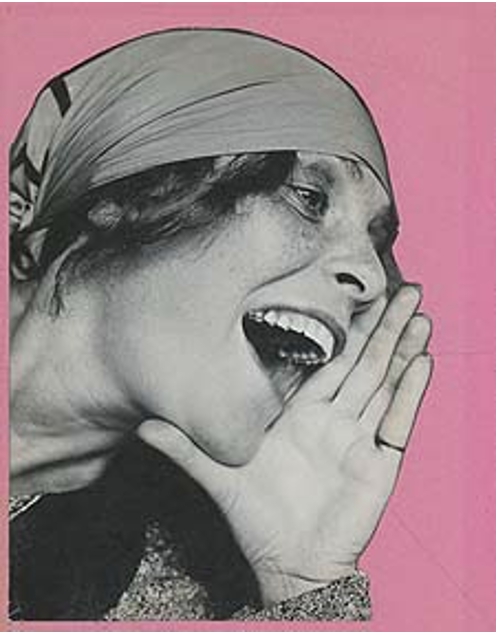
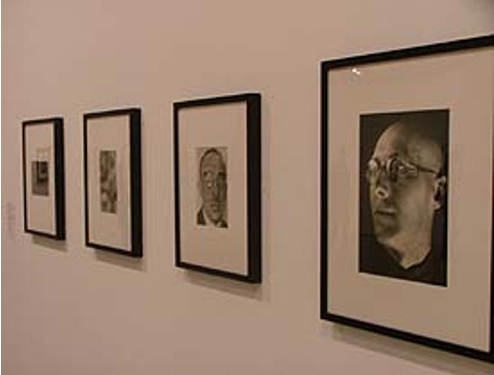
Bibliography
Lynne Warren, Encyclopedia of 20th century photography (New York: CRC Press, 2006), 708.
Charles Harrison and Paul Wood, Art in theory, 1900-2000: an anthology of changing ideas (New York: Wiley-Blackwell, 2003), 341-342.
Peter Noever and others, eds. The future is our only goal, (New York: Prestel, 1991).
Herbert Spencer and Rick Poynor, Pioneers of modern typography (Cambridge: MIT Press, 2004), 135.
Victor Margolin, The Struggle for Utopia: Rodchenko, Lissitzky, Moholy-Nagy, 1917-1946 (Chicago: University of Chicago Press, 1998).
David Elliot and Alexander Lavrentiev, Rodchenko, Alexander: Works on Paper 1914-1920 (New York: Southeby’s, 1995), 105-106.
Selim Omarovich Khan-Magomedov and Vieri Quilici, Rodchenko: the complete work (Cambridge: MIT Press, 1987), 294.
Arifa Akbar, “Drawing a blank: Russian constructivist makes late Tate debut,” The Independent, 2009.
Serge Lemoine, Alexander Rodchenko: Photography (Paris: Centre National De La Photographie, 1987), 65.
Oscar Fricke, “The Dzerzhinsky Commune: Birth of the Soviet 35mm Camera Industry.” History of Photography 3, no. 2 (1979): 135-155.
Richard Moss, “Rodchenko’s Revolution in Photography at the Hayward Gallery,” Culture 24, 2008. Web.